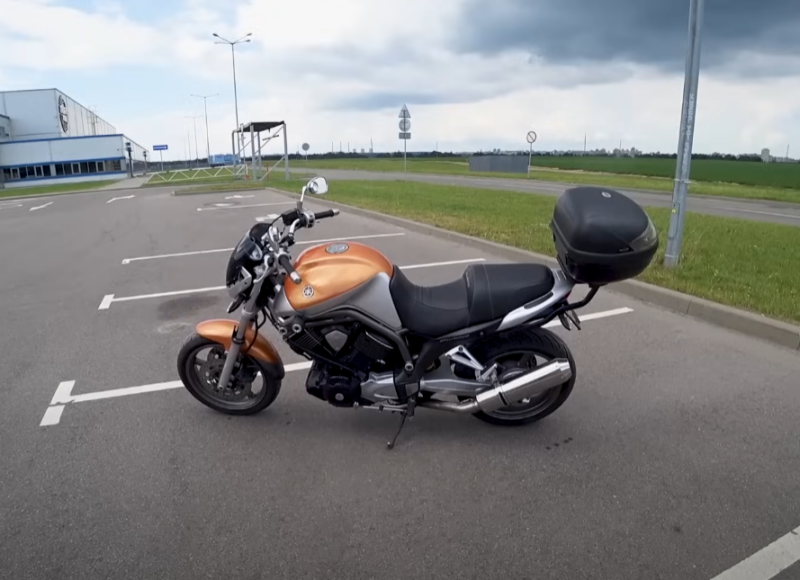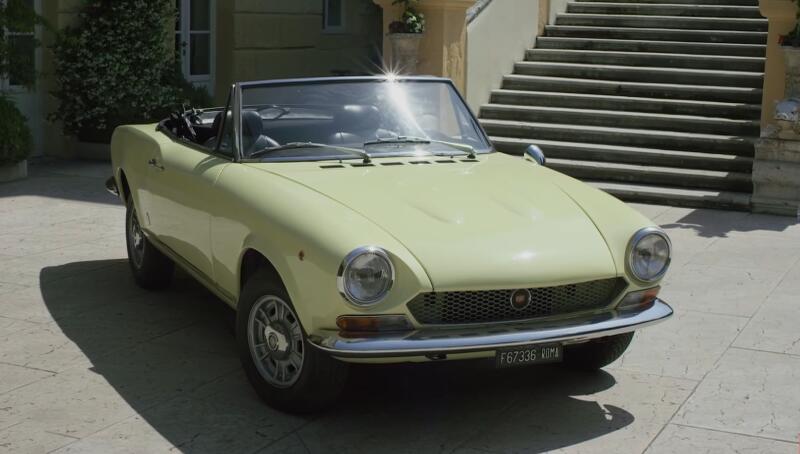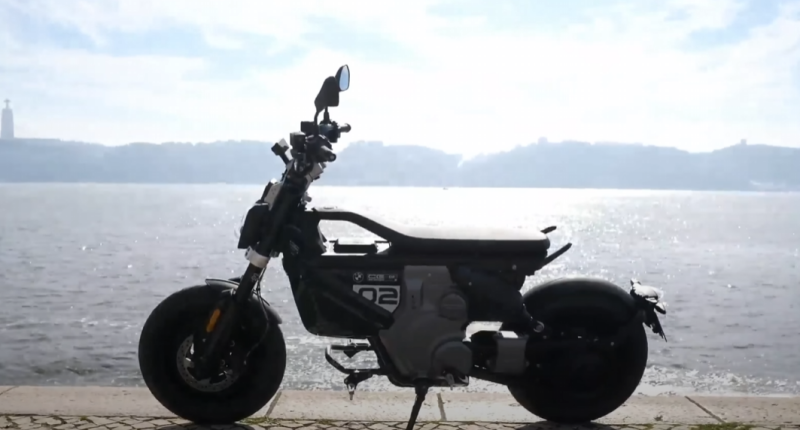Compared to, for example, the Monte Carlo Rally, the newspapers devote significantly fewer pages to this competition of motorists, do not make a fuss, do not stir up a stir. Meanwhile, here in Finland such passions boil! The most titled racing drivers on the planet have gone through the harsh school of the 1000 Lakes rally.
How it all began
Yes, everything went with Monte Carlo. In 1911, at the dawn of world motorization, the prince of the city-state of Monaco came up with the idea to bring colors to the winter life of his wonderful dwarf country. He organized a car race along the Côte d'Azur in the hope that the event would attract a wealthy public, ready to lighten their wallets in the casinos and restaurants of the principality.
 The picturesque surroundings are not of interest to the participants of the 1000 Lakes rally. Photo: YouTube.com
The picturesque surroundings are not of interest to the participants of the 1000 Lakes rally. Photo: YouTube.comBut, of course, the main reason for the birth of the rally on the French Riviera was the passion of the monarch for cars and sports. One way or another, the idea was a success and was a huge success. The end of January was chosen as the time for the first competition.
On the most difficult track with a length of 3 km (as of 337) with many sharp turns, mountain serpentines, and elevation changes, race car drivers dreamed of demonstrating their abilities, talents and courage. Rally in Monte Carlo gathered enthusiasts from all over Europe. Among them were "hot" Finnish guys.
But here's the problem: there were more and more people who wanted to participate in a difficult car race: only 23 applications were submitted for the first rally in Monte Carlo, and 87 for the next. The time has come when the organizing committee of the races in Monaco was forced to set a quota for each state. The share of Finns and Swedes in the 50s was 14 teams, and 30 crews declared their desire to participate in the run on the Riviera.
 Jump cascade on the Thousand Lakes rally track. Photo: YouTube.com
Jump cascade on the Thousand Lakes rally track. Photo: YouTube.comWhom to choose and send to Monte Carlo? The best, because they are the face of the country. A difficult question, however, could not be decided by lottery. Then they decided to identify the strongest on the track in the Jyväskylä region of Central Finland.
Birth of the Thousand Lakes Rally
It was 1951. Applicants for participation in the popular, promoted, well-organized Montecarlo Rally on September 1st took up position at the start in the vicinity of Jyväskylä. The interval between the start of each car was 2 minutes.
The rules were simple: whoever reaches the finish line first and with the fewest penalty points will go to the coveted race in Monaco. This day of the calendar was subsequently named the date of the formation of the rally in Northern Europe under the name, since 1954, "Thousand Lakes".
 The length of the 1000 Lakes rally route is 1 km. Photo: YouTube.com
The length of the 1000 Lakes rally route is 1 km. Photo: YouTube.comThe track, unlike the rules, was far from easy. Athletes had to overcome the 1700-kilometer path among the stunning beauties of the Finnish forests and lakes. But the rally drivers had no time for picturesque landscapes: the road passed through rough terrain, replete with "blind" turns, springboards - "sports facilities" helpfully created by Nature herself.
Looking ahead, let's say that these special stages have become a favorite place for observers: cars effectively flew past 30-40 m ski jumps. Spectators could determine the distance by marks on the road. In 2003, Estonian Markko Martin entered his name in the history of the Thousand Lakes Rally as the athlete who landed furthest after the jump. His record was 57 m at a speed of 171 km/h.
 The emotions of the spectators at Rally Finland are hard to convey. Photo: YouTube.com
The emotions of the spectators at Rally Finland are hard to convey. Photo: YouTube.comWhat emotions the audience experienced and the athlete himself, one can only guess. But after 2 years, the springboard, located 6 km from the start, allowed Gigi Galli to move the Estonian rally driver to second place: the Italian flew a Mitsubishi Lancer 1 meter further.
Developing and raising the status of Rally Finland
Since its inception, the Finnish sporting event has rapidly gained popularity. The time has come when rally drivers began to submit applications not only from Northern Europe, but also from other countries. Ours, for example, were first noted on four Moskvich-407 machines in 1958. By the way, this was the first time that Soviet pilots participated in international auto racing. We finished 15th out of 48 teams: a good result.
 Soviet athletes on the rally "1000 Lakes": a frame from the chronicle of 1977. Photo: YouTube.com
Soviet athletes on the rally "1000 Lakes": a frame from the chronicle of 1977. Photo: YouTube.comSo, foreign participants brought the competition beyond the national framework to the international level. It is interesting that when a motley crowd of "non-residents" gathered, the organizers came up with a special sign language for the communication of athletes.
Another fact is also interesting: until 1990, only locals won the Rally Finland. No wonder, because they knew their track very well. Therefore, the organizers decided: foreigners can study the road a few days before the competition. And then the great Swede racer Eric Karlsson on the Saab 93 snatched victory from the Finns.
And finally, in 90 Spaniard Carlos Sainz took the top podium as the first non-Northern rally driver. Then things went even worse for the Finns: in 2003, none of the hosts of the competition reached the finish line. The winner was the Estonian Markko Märtin, who then conquered the springboard with an incredible result.
 At the 1000 Lakes rally, such embarrassment is not uncommon. Photo: YouTube.com
At the 1000 Lakes rally, such embarrassment is not uncommon. Photo: YouTube.comWhen the FIA initiated the World Rally Championship in 1973, the 1000 Lakes entered the competition calendar along with Monte Carlo. Only highly qualified athletes could pass such a difficult route: overcoming required skill, maximum concentration, and excellent reaction. Unfortunately, not all rally drivers had enough of these qualities: it was not possible on the track without serious incidents.
Accidents and accidents at the Finnish Rally
The most difficult special stage of the Thousand Lakes was the 33-kilometer Ouninpohja. Here are some of the highlights:
✅ 1981. Austrian F. Wittmann crashed into a group of FIA representatives in an Audi Quattro. As a result of the accident, the President of the Finnish Motor Sports Federation died
✅ 1995 year. Bruno Thiry, the driver of the reconnaissance car, hit a woman to her death
✅ 1996 year. Dane Carsten Richardt flew into the crowd of spectators: 29 people were injured, one died
The Ouninpohya site was closed in 2009 for safety reasons.
Gallery of winners
The Thousand Lakes Rally has given the world a whole galaxy of high-class racing drivers. Multiple Finnish and world champions were:
✅ Hannu Mikkola - 1983 World Rally Champion, twice Finnish Champion
✅ Markus Gronholm - won 5 times in Finland and 2 times was the world champion in the WRC
✅ Tommi Mäkinen - won four world rally championships, once in Finland
✅ Sebastien Loeb is the most titled race car driver in the world: he took the rally cup 9 times
✅ Sebastien Ogier is a seven-time winner of the World Rally Championship
The competition of courageous guys, idols of millions of boys, was postponed only once - in 2020 due to the coronavirus. Now everything is going according to the calendar: in the autumn you will be able to watch a spectacular race of "flying" cars at the Thousand Lakes Rally.










